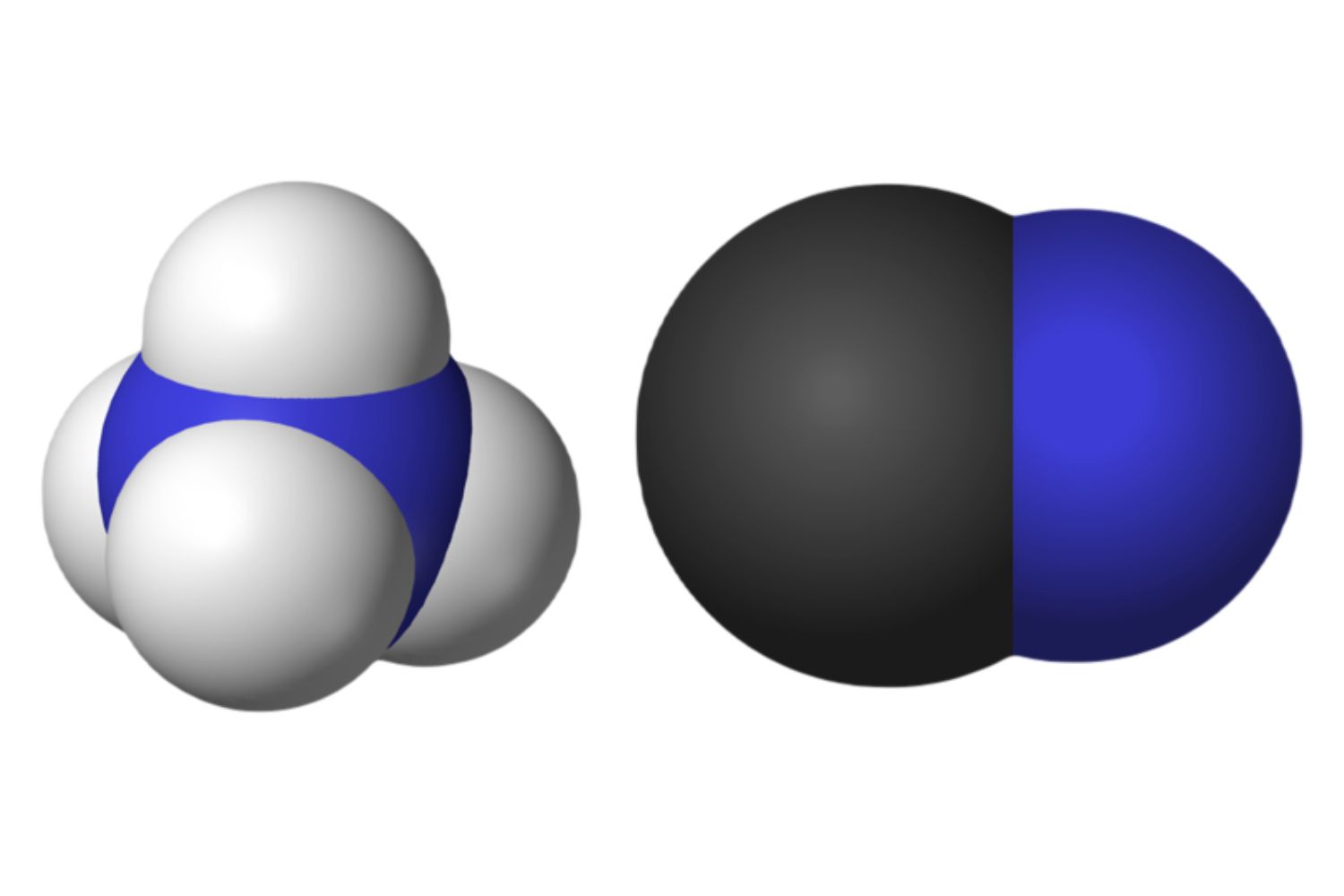
Ammonium cyanide is a chemical compound that might sound like something out of a sci-fi movie, but it’s very real and quite intriguing. What is ammonium cyanide used for? This compound has various applications, ranging from organic synthesis to gold extraction. However, it’s also known for its toxicity, making it a substance that requires careful handling. In this blog post, we’ll dive into 30 fascinating facts about ammonium cyanide, shedding light on its properties, uses, and safety measures. Whether you’re a chemistry enthusiast or just curious, these facts will give you a deeper understanding of this potent compound.
Key Takeaways:
- Ammonium cyanide is a highly toxic chemical compound used in various industrial processes, including pharmaceutical production and metal extraction. Its historical uses and environmental impact highlight the need for strict safety measures and proper disposal methods.
- Despite its dangers, modern applications of ammonium cyanide continue in the synthesis of organic compounds, plastics production, and mining. Research aims to find safer uses, but strict regulations and safety precautions are crucial to minimize its environmental impact.
What is Ammonium Cyanide?
Ammonium cyanide is a chemical compound with the formula NH4CN. It is a colorless, crystalline solid that is highly toxic and has a faint odor of ammonia. This compound is used in various industrial processes, but it is also known for its dangerous properties.
-
Ammonium cyanide is highly toxic and can be lethal if ingested, inhaled, or absorbed through the skin.
-
It decomposes into ammonia and hydrogen cyanide gas when exposed to air, making it extremely hazardous.
-
This compound is used in organic synthesis, particularly in the production of pharmaceuticals and dyes.
-
Ammonium cyanide is also used in the extraction of gold and silver from ores.
-
It is a key component in the manufacture of certain types of plastics and resins.
Chemical Properties of Ammonium Cyanide
Understanding the chemical properties of ammonium cyanide helps in handling it safely and utilizing it effectively in various applications.
-
The molecular weight of ammonium cyanide is 44.06 g/mol.
-
It has a melting point of 36°C (97°F), which is relatively low for a solid compound.
-
Ammonium cyanide is highly soluble in water, forming a clear, colorless solution.
-
It reacts with acids to release hydrogen cyanide gas, which is extremely poisonous.
-
The compound is unstable and can decompose rapidly, especially in the presence of moisture.
Safety Precautions for Handling Ammonium Cyanide
Due to its high toxicity, strict safety measures must be followed when handling ammonium cyanide.
-
Always wear appropriate personal protective equipment (PPE) such as gloves, goggles, and lab coats.
-
Work in a well-ventilated area or under a fume hood to avoid inhaling toxic fumes.
-
Store ammonium cyanide in a cool, dry place away from incompatible substances like acids.
-
In case of exposure, seek immediate medical attention and follow emergency protocols.
-
Proper disposal methods must be followed to prevent environmental contamination.
Historical Uses of Ammonium Cyanide
Ammonium cyanide has been used in various applications throughout history, some of which are still relevant today.
-
In the 19th century, it was used in the production of synthetic dyes.
-
It played a role in early photographic processes, particularly in fixing images.
-
Ammonium cyanide was once used in the production of certain types of explosives.
-
It has been utilized in the electroplating industry to deposit metals onto surfaces.
-
The compound was also used in early methods of gold and silver extraction from ores.
Environmental Impact of Ammonium Cyanide
The environmental impact of ammonium cyanide is significant due to its toxicity and potential for contamination.
-
If released into the environment, it can contaminate water sources and soil.
-
Aquatic life is particularly vulnerable to cyanide poisoning, which can lead to massive fish kills.
-
Ammonium cyanide can persist in the environment, posing long-term risks to ecosystems.
-
Proper containment and disposal are crucial to prevent environmental damage.
-
Regulatory agencies have strict guidelines for the handling and disposal of ammonium cyanide to minimize its impact.
Modern Applications of Ammonium Cyanide
Despite its dangers, ammonium cyanide continues to be used in various modern industrial processes.
-
It is used in the synthesis of organic compounds, including pharmaceuticals and agrochemicals.
-
The compound is employed in the production of certain types of plastics and resins.
-
Ammonium cyanide is used in the mining industry for the extraction of precious metals.
-
It plays a role in the manufacture of specialty chemicals and intermediates.
-
Research continues to explore safer and more efficient uses of ammonium cyanide in various fields.
The Final Word on Ammonium Cyanide
Ammonium cyanide, a compound with both fascinating and hazardous properties, demands respect and caution. Its use in chemical synthesis, gold extraction, and organic chemistry highlights its importance in various industries. However, its toxicity and potential for harm can't be ignored. Proper handling, storage, and disposal are crucial to ensure safety.
Understanding the chemical structure and reactions of ammonium cyanide helps in appreciating its applications and risks. Knowledge about its toxicity and safety measures can prevent accidents and health issues. Always follow guidelines and regulations when dealing with this compound.
By staying informed and cautious, you can safely navigate the complexities of ammonium cyanide. Whether you're a student, professional, or curious mind, this knowledge empowers you to handle this compound responsibly. Stay safe, stay informed, and respect the power of chemistry.
Frequently Asked Questions
Was this page helpful?
Our commitment to delivering trustworthy and engaging content is at the heart of what we do. Each fact on our site is contributed by real users like you, bringing a wealth of diverse insights and information. To ensure the highest standards of accuracy and reliability, our dedicated editors meticulously review each submission. This process guarantees that the facts we share are not only fascinating but also credible. Trust in our commitment to quality and authenticity as you explore and learn with us.
